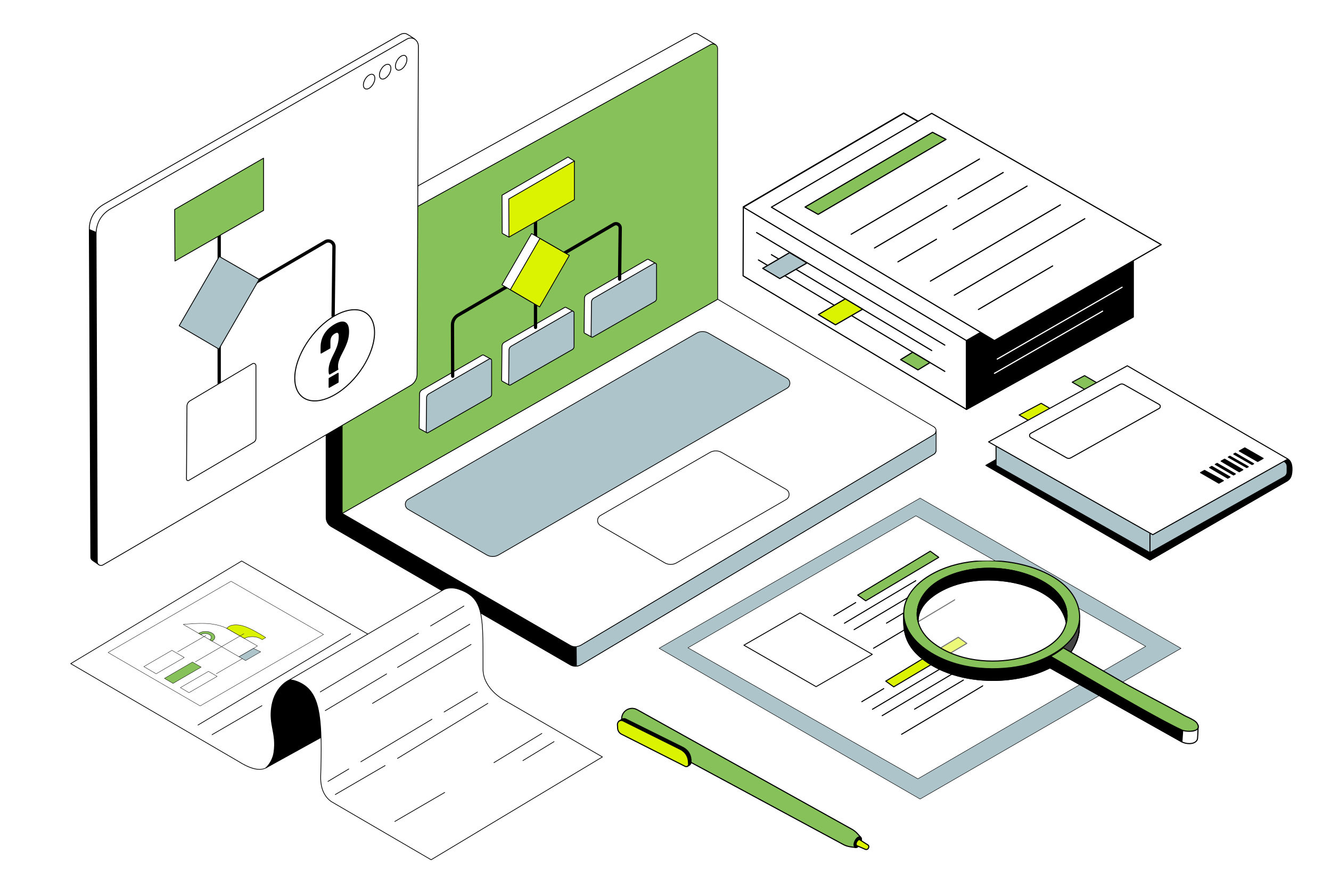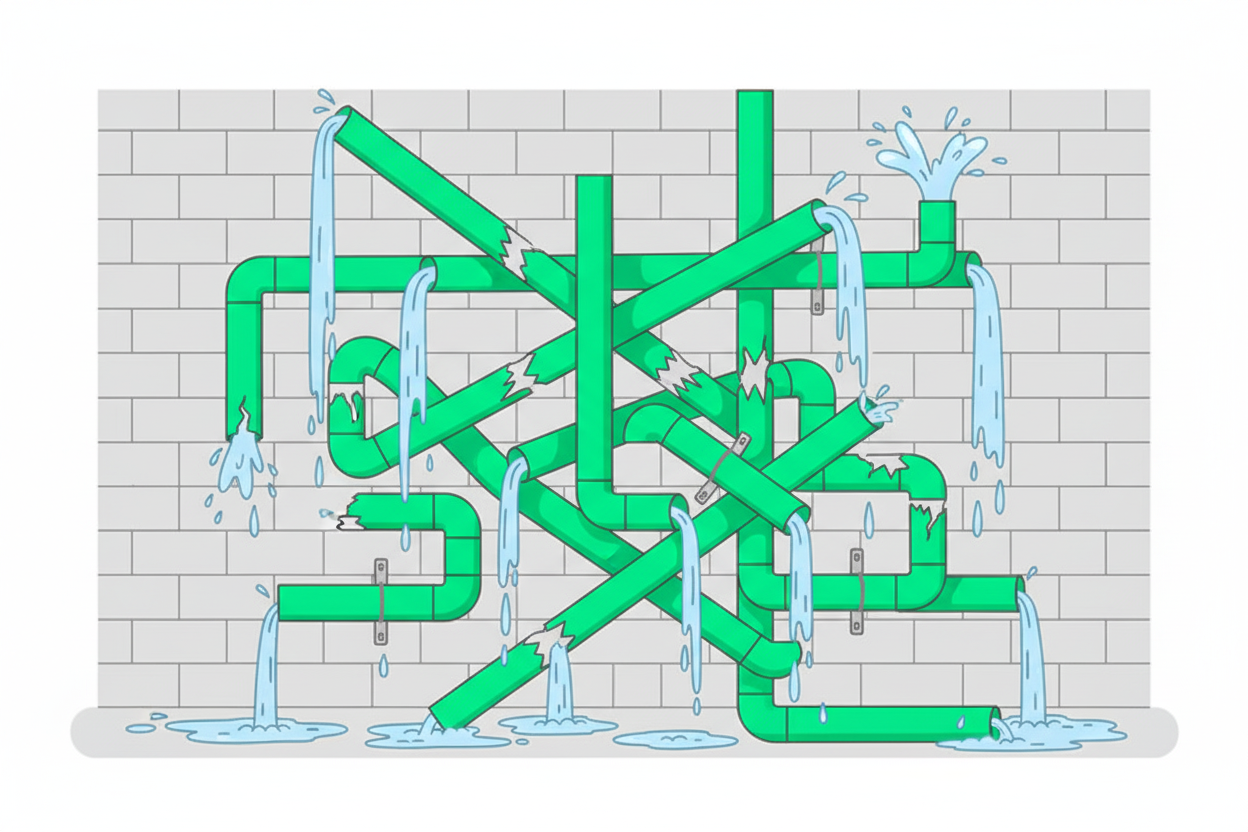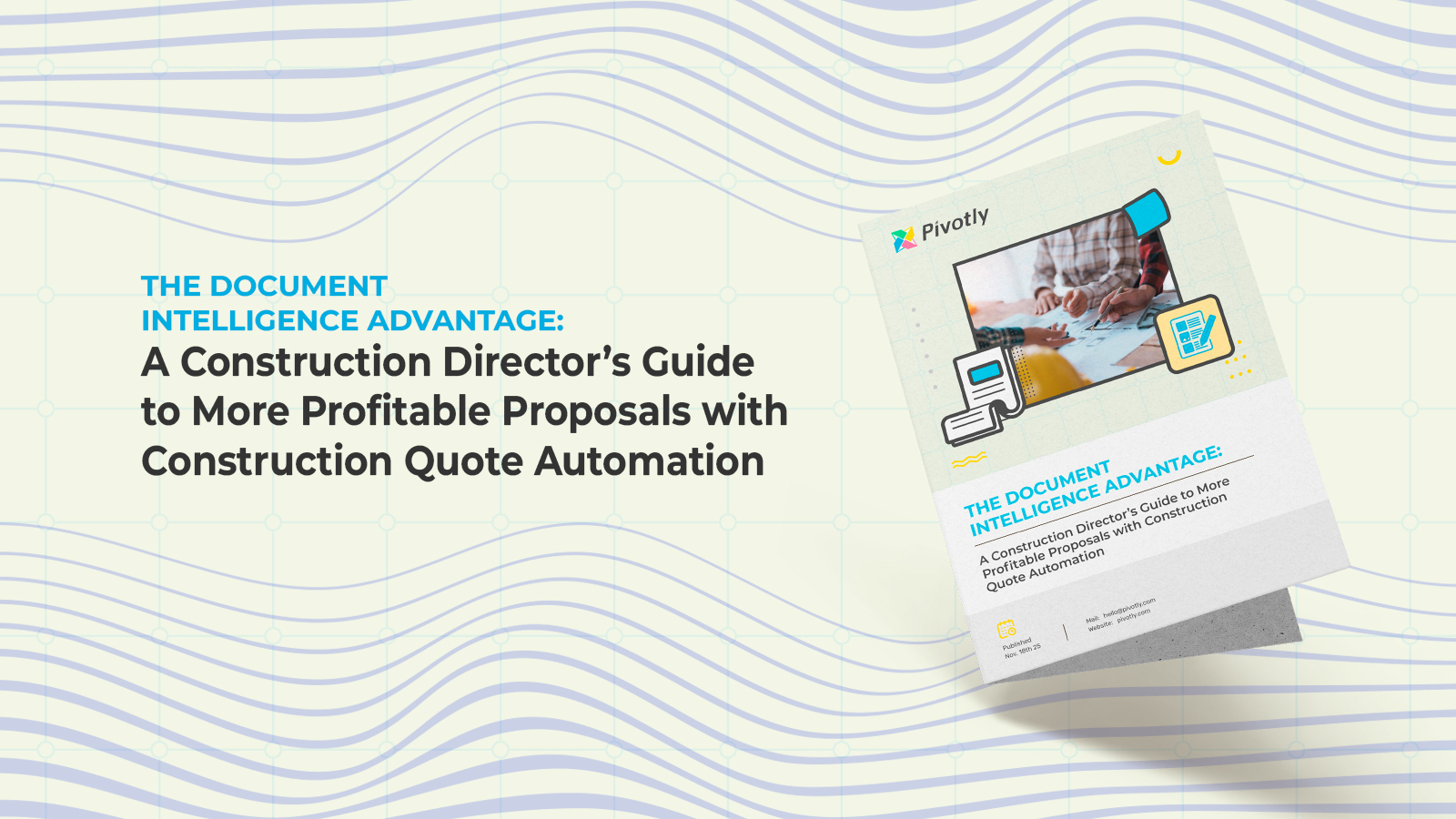The Broken Promise of a “One System to Rule Them All” Monolithic System Approach
You’ve heard the pitch a hundred times. It’s a powerful dream, sold in a slick demo: one single, elegant system to run your entire operation. Every process, every piece of data, every team, all in one place. It promises to end the chaos, streamline workflows, and give you a perfect, top-down view of everything.
But let’s be honest about the reality.
Fast forward past the expensive implementation and the painful training, and what do you have? That “single source of truth” is now surrounded by a messy moat of spreadsheets. Your teams are still exporting CSVs and manually copying data just to get their jobs done. Instead of streamlining work, you’ve created a new full-time job: working around the system you paid a fortune for.
If this feels familiar, you’re not alone. And here’s the hard truth they don’t tell you in the sales demo: It’s not your fault. It’s the model.
The all-in-one dream has become a nightmare for modern ops because the very idea of a rigid, monolithic system is broken. Forcing your dynamic, evolving business into a single, inflexible box doesn’t create efficiency; it stifles it. It’s time to stop trying to fit into the system and start building a system that fits you.

The High Cost of Being Locked In
A monolithic system doesn’t just under deliver on its promises; it actively holds your business back. It creates hidden costs that drain your budget, your team’s morale, and your ability to compete. While the problems show up in different ways, they almost always trace back to these three sources.
#1 Innovation Comes to a Halt Your R&D team finds a groundbreaking new quality assurance tool that could cut defects by 50%. The sales team wants to adopt a modern CRM that your top reps already love. The answer from IT? “No, it doesn’t integrate with the core system.” A monolithic architecture forces you to sacrifice best-of-breed solutions for the sake of maintaining a single, outdated platform. While you’re stuck with mediocre, built-in modules, your competitors are adopting specialized tools and getting faster, smarter, and more efficient.
#2 You’re Paying for Workarounds, Not Work Look at your team’s actual daily workflow. How much time is spent on productive tasks versus feeding the beast? Every hour an engineer spends wrestling with clunky ERP reports or a manager spends manually combining spreadsheets is a hidden tax on your payroll. These workarounds aren’t just minor annoyances; they are staggering operational inefficiencies. You’re paying highly skilled people to perform manual data entry, effectively burning money just to bridge the gaps your all-in-one system created.
#3 Every Connection is a Time Bomb Even the most “all-in-one” systems can’t really do it all. So you’re forced to build custom integrations for essential tools. These connections are notoriously brittle, expensive to build, and a nightmare to maintain. Every time the core system has a version update, you hold your breath hoping a critical integration doesn’t break and bring a whole department to a standstill. Instead of a solid foundation, you’re left with a web of fragile connections, a system that’s constantly one update away from disaster.

The New Playbook: Build Around Your Best, Don’t Replace Them
For years, we’ve been asking the wrong question. We’ve asked, “Which all-in-one software can we force our business into?” when we should have been asking, “How do we get our best, most-loved tools to work together?”
The solution isn’t to find one mediocre system that does everything poorly. It’s to embrace a best-of-breed vs suite approach and build a framework where your specialized tools can thrive.
Imagine if all your separate systems, your ERP, your CRM, your team’s favorite project management app, even your critical spreadsheets, were all plugged into a central hub. Not a data warehouse where information goes to die, but a live, shared resource where data flows between your tools in real time.
When your data is connected and accessible, something incredible happens. Your teams get to keep using the tools they are experts at, but the information is no longer siloed. The sales team’s CRM talks to the finance team’s ERP. The shop floor’s machinery data is instantly available to the operations manager.
This is what real modern ops technology looks like. It’s a flexible, adaptable model where you can add, remove, or upgrade tools without triggering a catastrophic chain reaction. You can finally build the automations you need and get the insights you want, because your data is no longer a prisoner of a single, monolithic system.

Your Business Isn’t a Monolith. Your Tech Shouldn’t Be, Either.
Your business is dynamic. Your teams are creative, and your processes have to adapt constantly to meet new challenges. So why are you still trying to lock all that potential into one rigid piece of software?
The endless workarounds, the frustrating delays, and the constant feeling of being held back aren’t just side effects, they are the direct result of an outdated playbook. The monolithic, all-in-one approach doesn’t work anymore.
The future of operations isn’t about finding the perfect system. It’s about building a perfect system for you. One that’s agile, adaptable, and powered by the tools your teams already love. It’s a shift from forcing your business into a box to building a foundation that lets your business thrive.
Recognizing the problem is the first step. The next is building a new playbook. If you’re ready to move from a rigid system to an agile one, our next piece is for you.
Wanna know how much it's costing you?
Check out our calculator to get an idea of how much data fragmentation is really costing you
Calculate my costsOr, Take the Next Step:
No high-pressure sales pitch, just a practical plan to move forward.


